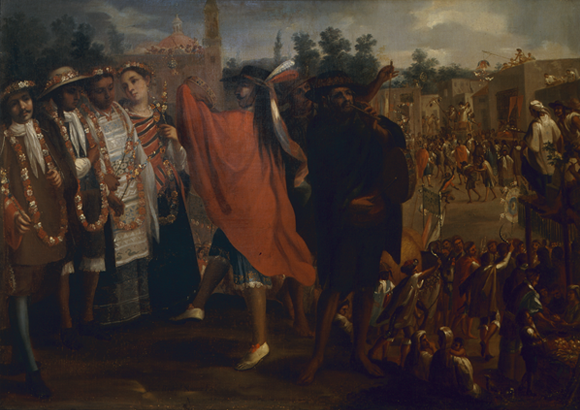Indian Festivals and Sacred Rituals
Soon after the conquistador Hernán Cortés defeated the Mexica in 1521, their capital, Tenochtitlan, with its striking ceremonial center, was transformed into a Spanish city, the new locus of Spanish power and the setting for the emergence of a host of new political and religious rites. While in many ways these festive apparatuses introduced new forms of ritual and advanced a key new message—the willing submission to the Catholic king—the indigenous communities of Central Mexico had had ample experience with highly ostentatious forms of ritual since pre-Hispanic times. Indian dances (commonly referred to as mitotes) and weddings offer a brilliant glimpse into their festive paraphernalia.
In the Andes, the Spanish government allowed the continuation of ancient traditions when they were incorporated into Christian ritual, and native groups drew on their pasts to proclaim their rights as a polity. This is evident in the Corpus Christi procession, the most important religious festival of the Hispanic world, which celebrated the transubstantiation of the body of Christ. In Cuzco, the indigenous nobility occupied a central place in the festival, dressing in Inca-style regalia and re-creating the pre-Hispanic dynasty through performance. Christianized Indians also dressed as "heathen" Indians and engaged in mock battles (as they did in Mexico), coding the Inca as a civilizing force. After the 1780 revolt of the Inca Tupac Amaru, Indian participation and attire were banned from public festivals in an effort to suppress dissension and erase the memory of the lost empire.
Exhibition Home Page Memory, Genealogy, and Land
Image: Juan Rodríguez Juárez (Mexico, 1675-1728),Indian Wedding, c. 1725; oil on canvas; 40 x 57 in. (100 x 145 cm). Private collection.